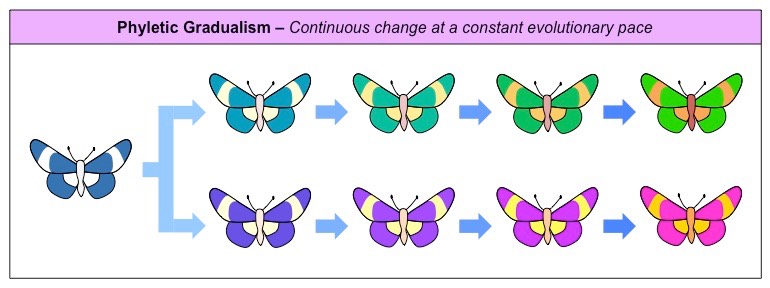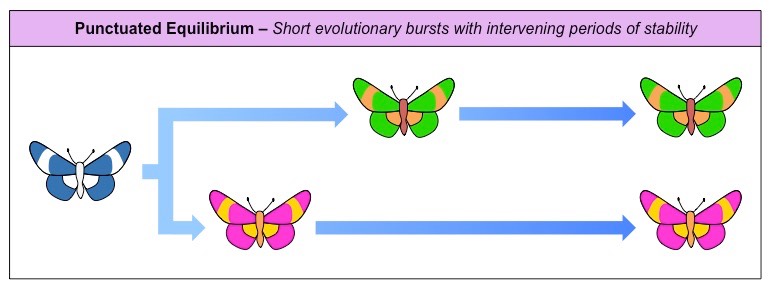![]()
Understanding:
• Speciation can occur abruptly
Evolution occurs both within a species (microevolution) and across the species barrier (macroevolution = speciation)
- Evolution via speciation may occur by one of two alternative models: phyletic gradualism or punctuated equilibrium
Phyletic Gradualism
According to this model, speciation generally occurs uniformly, via the steady and gradual transformation of whole lineages
- In this view, speciation is seen as a smooth and continuous process (big changes result from many cumulative small changes)
- This view is supported by the fossil record of the horse, with many intermediate forms connecting the ancestral species to the modern equivalent

Punctuated Equilibrium
According to this model, species remain stable for long periods before undergoing abrupt and rapid change (speciation)
- In this view, speciation is seen as a periodic process (big changes occur suddenly, followed by long periods of no change)
- This view is supported by the general lack of transitional fossils for most species – however such absences could also be explained by the relatively rare and irregular conditions required for fossilisation

Pace of Evolution

